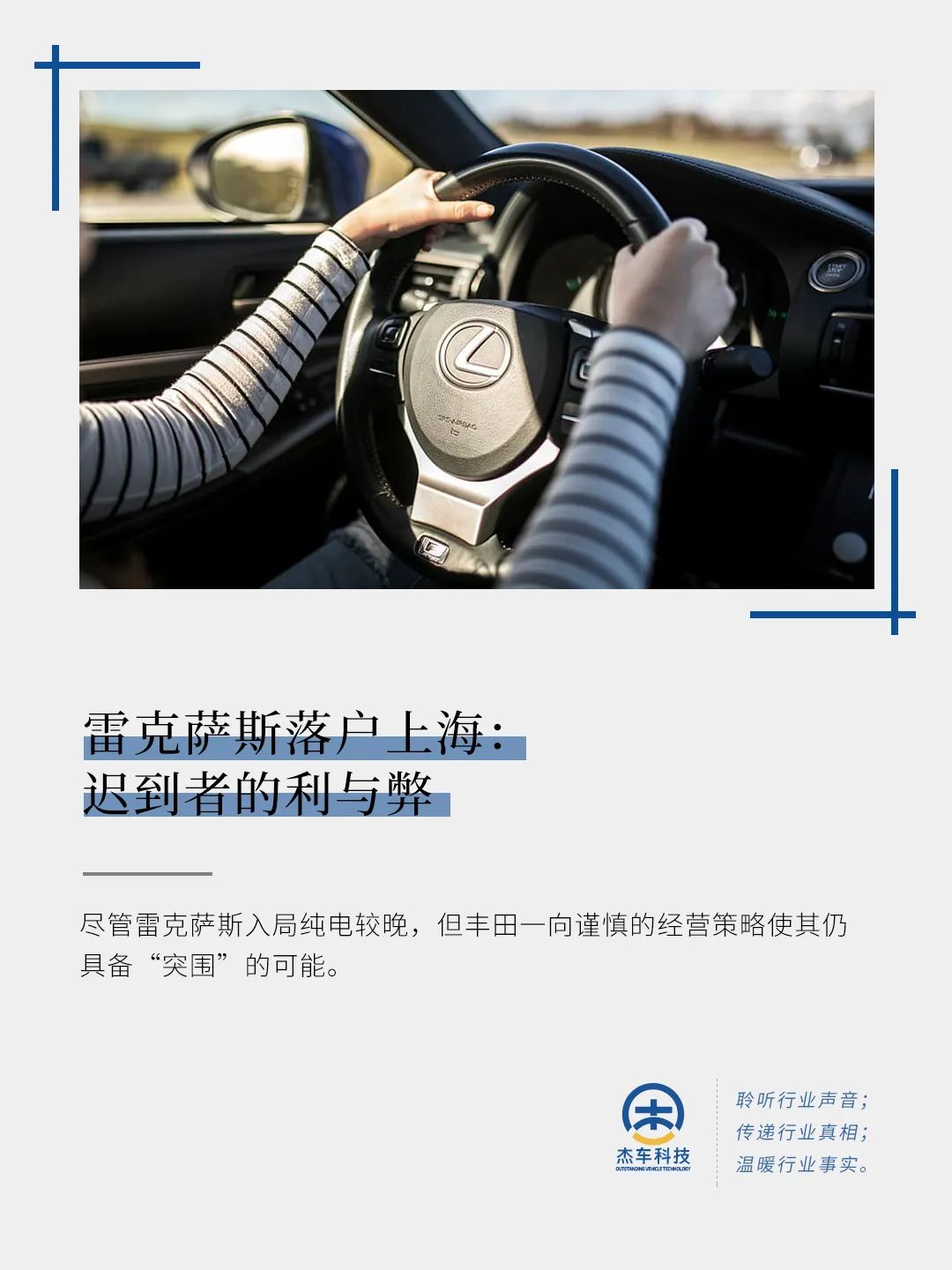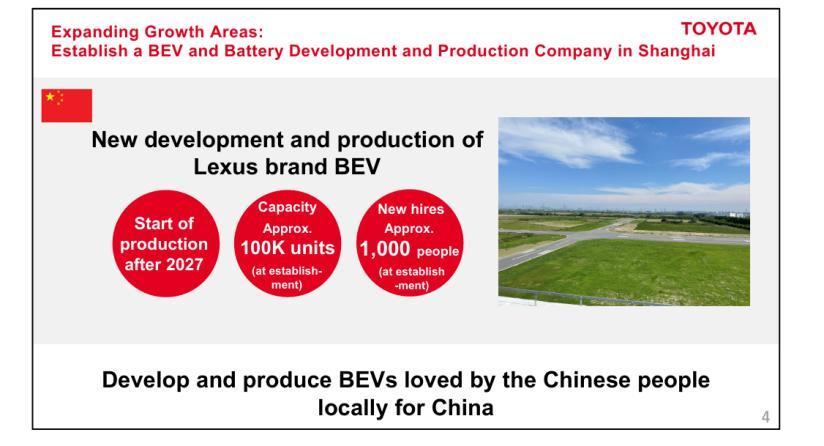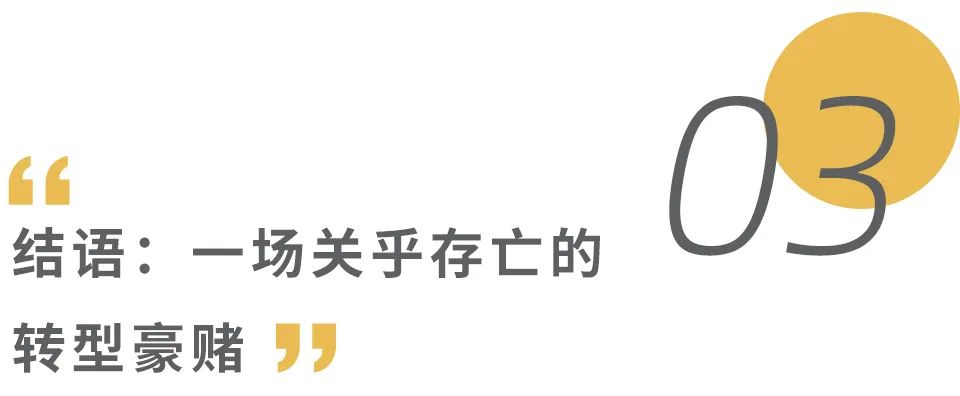Lexus Establishes Base in Shanghai: Navigating the Pros and Cons as a Latecomer
![]() 02/19 2025
02/19 2025
![]() 674
674

Written by Li Yue
Produced by Jieche Technology
On February 5, Lexus, officially announced on its website that Toyota Motor Corporation and the Shanghai Municipal Government have inked a cooperation agreement aimed at fostering green and low-carbon development in China. As part of this accord, Toyota plans to establish a research and production venture for Lexus pure electric vehicles and batteries in Jinshan District, Shanghai, with an anticipated start of production in 2027. This marks a pivotal shift for Lexus, transitioning from "exploring electrification via imports" to "decisive localization in China".

As a luxury brand under Toyota's umbrella, Lexus' strategic importance has transcended mere profitability. In 2024, its sales in China amounted to 181,900 units, maintaining its top spot among imported luxury vehicles, albeit witnessing a 19% decline from its 2021 peak of 227,000 units. More crucially, its reputation as the "king of resale value" has diminished, with expanding terminal discounts on models like the ES.
Lexus' decision to establish a base in Shanghai and prioritize electrification underscores its introspective approach to future planning. With new energy vehicles commanding a 50% market penetration rate in China, the sector boasts robust growth. In contrast, traditional luxury brands such as Mercedes-Benz and BMW reported global electrification rates of 19% and 15%, respectively, in 2024, while Lexus lagged behind at less than 3%.
The location's technological development potential, Lexus' introspective stance as a late entrant, and its brand positioning in the new era will be crucial determinants of the new venture's future trajectory.

Policy incentives, industrial clusters, and robust personnel support are the bedrock of successful automotive enterprises, and Shanghai stands out in China in this regard.

Public records indicate that although Jinshan District is not traditionally an automotive hub, it is home to key players in the new energy industry chain within a 50-kilometer radius, including Tesla's Gigafactory, NIO Inc.'s headquarters, and CATL's R&D center, forming one of the world's densest new energy vehicle industrial clusters. Across the Yangtze River Delta, there are 4,000 enterprises involved in batteries, electric drives, and intelligent driving, spanning the entire production chain from raw materials to finished products, potentially offering a robust supply chain foundation for Lexus' localization efforts.
Since China lifted the foreign ownership cap for new energy vehicles in 2018, Tesla's Shanghai Gigafactory has validated the feasibility of a wholly-owned model. Following suit, Toyota aims to leverage policy incentives such as tax breaks and land support. Auto analyst Xiang Tao told Jieche Technology that large-scale manufacturing enterprises often receive maximum local government support within regulatory frameworks, benefitting both tax revenue and employment, fostering a "win-win" scenario. Furthermore, Jinshan's proximity to the Yangshan Deep-Water Port facilitates exports to Southeast Asia and Europe, aligning with Lexus' dual strategic objectives of serving the "Greater China Region" and as an "Export Base".
In terms of talent, universities and research institutions in Shanghai and the Yangtze River Delta provide a rich pool of automotive intelligence and electrification experts, poised to become high-quality resources for regional development and consumption stimulation. Shanghai's prime location, urban infrastructure, resources, and public services directly or indirectly bolster the development of automotive talent.
Toyota's financial data for the first three fiscal quarters of FY2024 (April to December 2024) reveals a 4.9% year-on-year increase in operating revenue to 35.67 trillion yen, a 13.2% decrease in operating profit to 3.68 trillion yen, and a 3.9% increase in net profit to 4.10 trillion yen. During this period, Toyota and the Lexus brand sold a combined 7.76 million vehicles, a year-on-year decline of about 2%.
However, "lean production" and "fine-grained cost control" have long been hallmarks of Toyota's operations. Even as the costs of researching, developing, and producing new energy vehicles escalate, the funding required for this new venture's growth stage does not pose a significant challenge for Toyota.
'Lexus' decision to establish a base in Shanghai is a smart move, aiming for a "win-win" outcome,' commented Xiang Tao.

When Lexus entered the Chinese market in 2004, the luxury car segment was dominated by BBA (Benz, BMW, Audi). Lexus differentiated itself with superior quality and higher resale values compared to Toyota. Fast forward to 2024, China's high-end new energy vehicle market, priced above 350,000 yuan, sees local models like NIO ET7, Li Auto L9, and AITO M9 capturing 60% market share, with intelligent features (e.g., NIO's NAD autonomous driving and HarmonyOS intelligent cockpit) as core competitiveness. Lexus' sole available pure electric model, the RZ series (with a maximum CLTC range of 619 kilometers), lacks range and intelligence advantages, contributing only 5% to its 2024 sales.

Historically, the "luxury" of the internal combustion engine era rested on brand premium, often coupled with "auspicious meanings" or generally accepted "social status symbols" (e.g., "Benz" for the eldest brother, "Audi" for leaders, "BMW" for wealthy youth, and "Lexus" for developers). Today, the collective aura of luxury brands appears to be waning, and consumers' car-buying philosophy is rapidly shifting from "buying the brand" to "buying the technology." Post-millennial consumers increasingly embrace new force brands and technology-driven offerings, potentially hindering Lexus' new venture.
Despite Lexus' late entry into the pure electric vehicle market, Toyota's cautious business strategy still holds the potential for "breakthroughs".
Public records indicate that Toyota's solid-state battery technology is progressing well, with plans to mass-produce solid-state batteries (offering a range of 1,200 kilometers and an energy density of 400Wh/kg) by 2027, surpassing CATL's Qilin battery performance. The Jinshan plant could produce the first model equipped with this cutting-edge technology.
As localization progresses, localized Lexus vehicles can reduce component costs through local procurement (e.g., collaborating with Huawei to develop 800V silicon carbide electric drive modules). It is anticipated that the RZ model's price could drop from the current imported price of 369,900 yuan to the range of 280,000 to 320,000 yuan, directly competing with models like the BMW iX3.
Moreover, Lexus' repurchase rate among Chinese users reached 38% in 2024, surpassing Mercedes-Benz (32%) and BMW (30%). Its core user base, comprising high-net-worth individuals aged 35-50, exhibits high brand loyalty. If domestic models maintain their reputation for "craftsmanship quality," they still have the potential to meet the electrification needs of some internal combustion engine vehicle users.

Toyota's decision to establish a wholly-owned factory in Jinshan, Shanghai, represents a deep commitment to China's new energy industry chain and a critical battle for the survival of the Lexus brand. Despite debates over its entry timing, its technological reserves and localization strategy hold the potential to turn the tide. If Lexus can strike a balance between high-end positioning and market penetration, it may leverage Chinese manufacturing prowess to leap from "Oriental Luxury" to "Global Electric Benchmark." The 2027 commencement of production at the Jinshan plant could mark the resurgence or decline of traditional luxury brands amidst the electrification wave.







